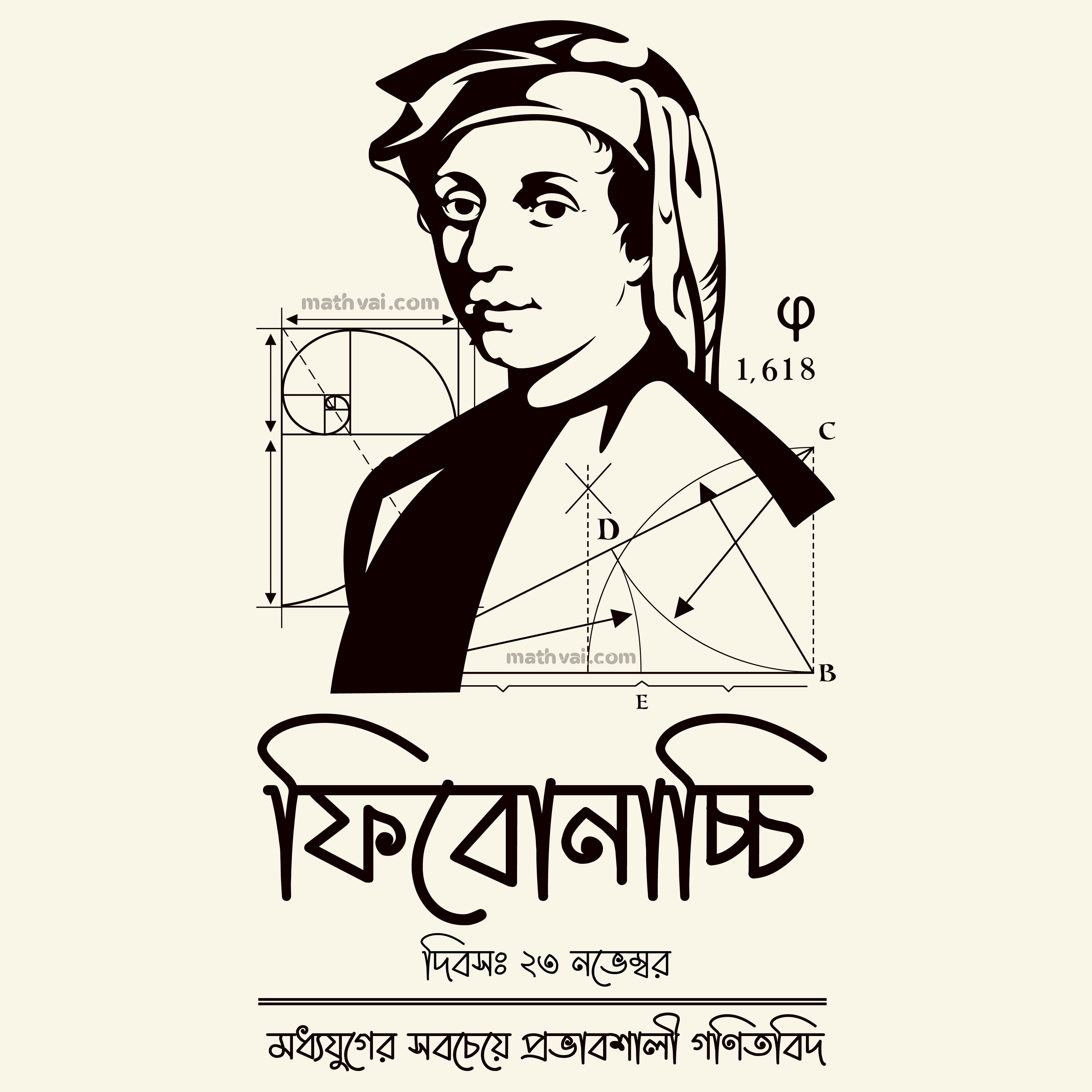fibonacci
Published - Thu, 23 Nov 2023
Leonardo of Pisa, more commonly known as Fibonacci, was a
13th-century Italian mathematician who introduced to the Western world a
numerical sequence that would become one of the most famous in mathematics—the
Fibonacci sequence. Born around 1170, Fibonacci was instrumental in spreading
the Hindu-Arabic numeral system throughout Europe, which revolutionized
arithmetic and mathematics. However, his most enduring legacy lies in his
discovery of the sequence that bears his name.
The Fibonacci sequence begins with two numbers, 0 and 1.
Each subsequent number in the sequence is the sum of the two preceding numbers.
So, the sequence goes: 0, 1, 1, 2, 3, 5, 8, 13, 21, and so on, continuing
indefinitely. This sequence possesses remarkable properties that appear in
various natural phenomena, making it a fascinating area of study not only in
mathematics but also in fields such as biology, art, and architecture.
Fibonacci encountered the sequence while studying the
breeding patterns of rabbits in his book "Liber Abaci" ("The
Book of Calculation"). In one of its chapters, he presented a problem
involving the growth of a hypothetical rabbit population over the course of
several months. He devised a model where rabbits breed in pairs and each pair
produces a new pair every month, starting from the second month. This problem
led to the formulation of the Fibonacci sequence as a solution to tracking the
number of rabbits after each month.
What makes the Fibonacci sequence intriguing is its prevalence
in nature. It appears in the branching of trees, the arrangement of leaves, the
spirals of shells, the petals of flowers, and even in the proportions of the
human body. The sequence manifests in the spiral patterns found in sunflowers,
pinecones, and the shells of snails, exhibiting a mathematical elegance that
mirrors the beauty of the natural world.
Furthermore, the golden ratio, often associated with the
Fibonacci sequence, is derived from its consecutive terms. As the sequence
progresses, the ratio between consecutive Fibonacci numbers approximates the
golden ratio—approximately 1.6180339887. This ratio is renowned for its
aesthetic appeal and is found in art, architecture, and design, believed to
create visually pleasing compositions.
Fibonacci's contributions extended beyond this sequence. He
played a crucial role in popularizing the Hindu-Arabic numeral system in
Europe, revolutionizing mathematics and commerce by introducing the use of zero
and the decimal place value system. His efforts helped lay the groundwork for
modern mathematics and paved the way for the scientific advancements of
subsequent centuries.
In summary, Fibonacci's legacy endures through his
discoveries, particularly the sequence that bears his name. His work not only
revolutionized mathematical thinking but also continues to inspire and
fascinate scholars across diverse fields, showcasing the beauty of mathematics
in the natural world and its applications in various disciplines.
Created by
Comments (0)
Popular categories
Mathematician Series
11Math Wall Poster
7Visual Math
7Chemistry
1Units
1Latest blogs

Brahmagupta
Sat, 16 Dec 2023

thales
Sat, 16 Dec 2023

Leibniz
Sat, 16 Dec 2023

